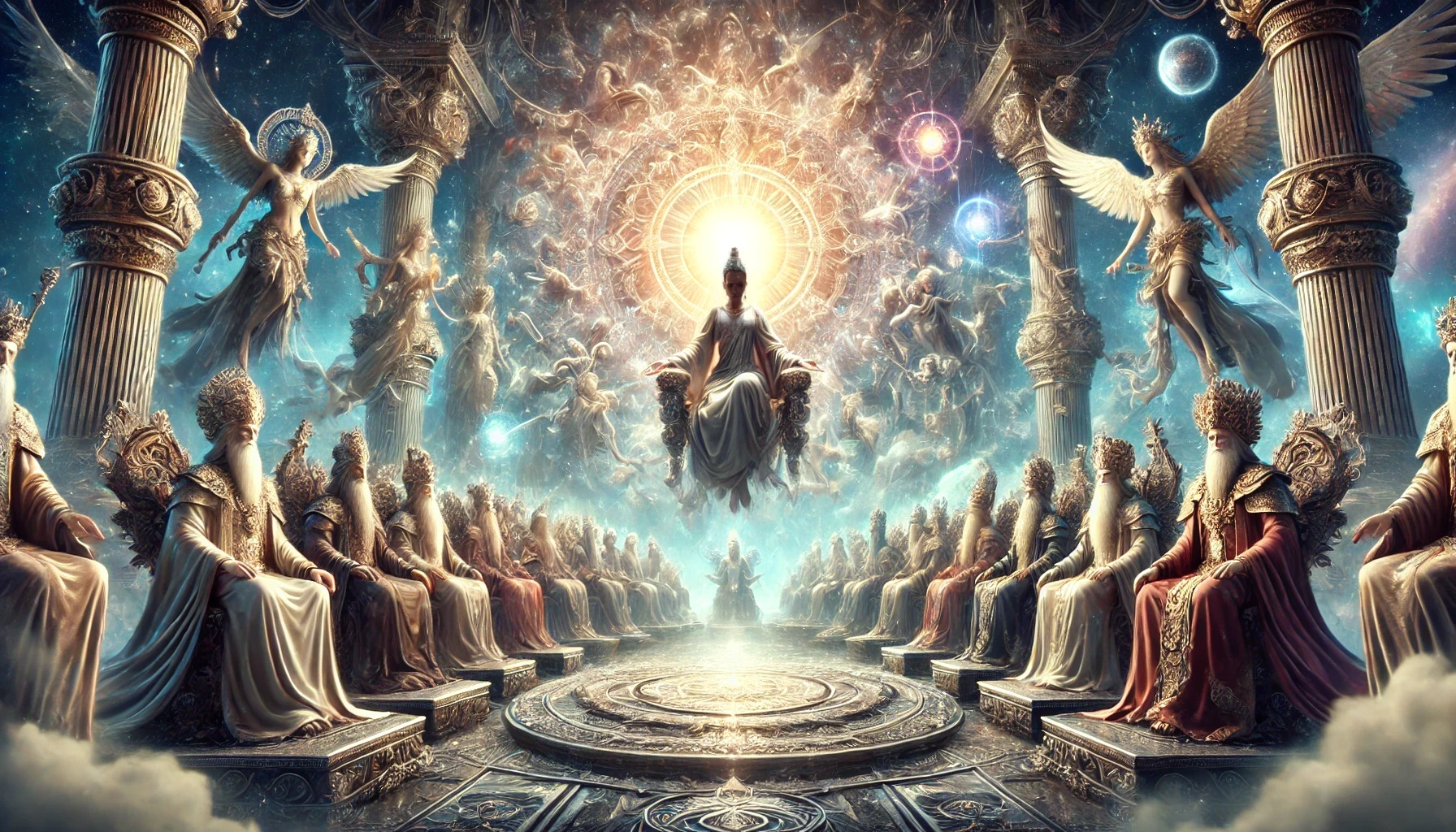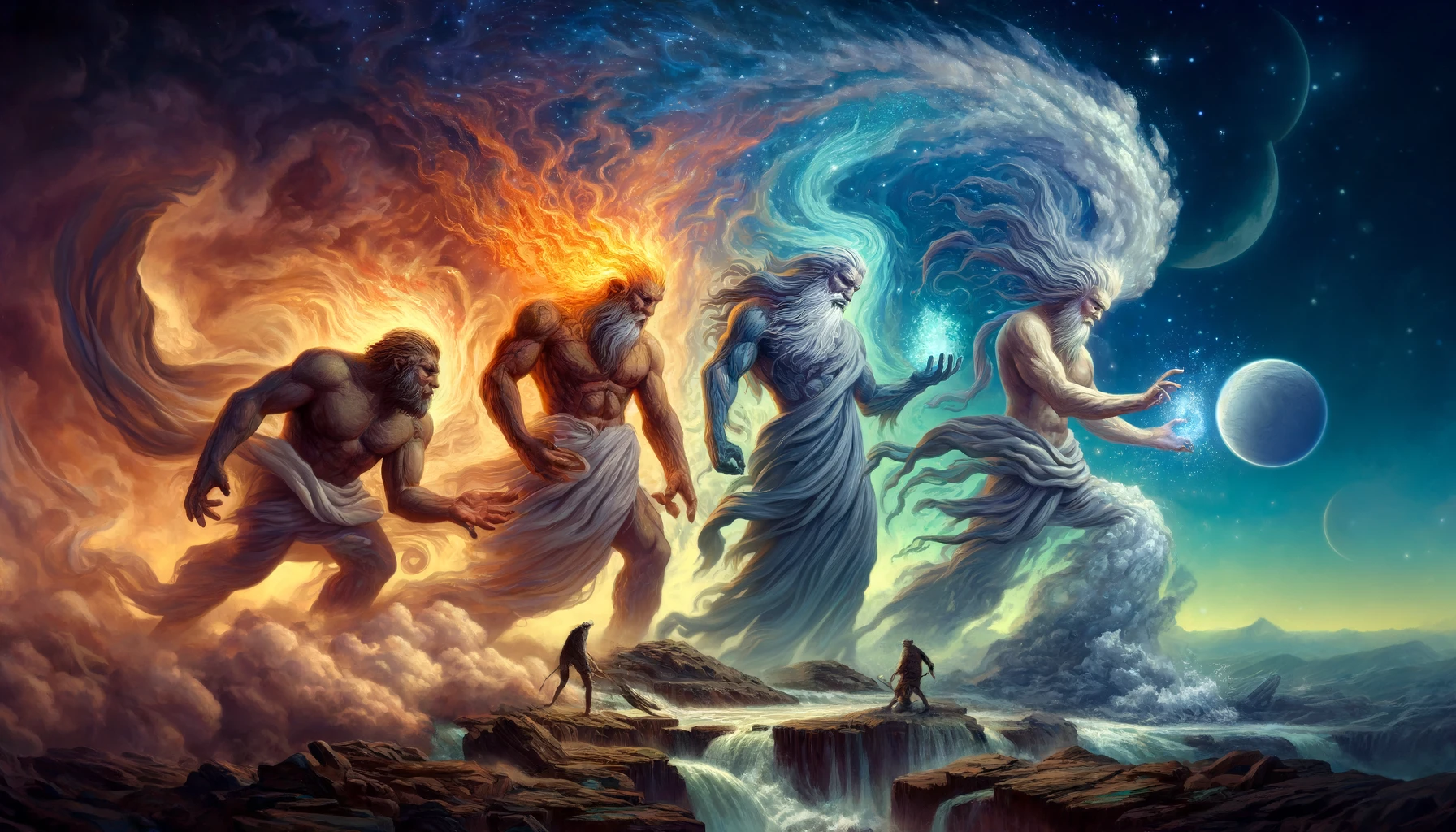1. Overview
In the world of Staterum, the spiritual landscape is shaped by a complex and diverse array of deities, each worshipped by different cultures and societies. This tapestry of divine beings spans several pantheons, each with its own followers and doctrines, contributing to a richly woven mythology that permeates every aspect of life in Staterum.

2. Pantheons
- The Ancients
- The Old Gods
- The New Gods
- The Vices
- The Elemental Envoys
- Lesser Gods and Demi-Gods
- ???
- ????
3. The Ancients
The Ancients, though pivotal in the creation myths of Staterum, have largely faded from the common memory. Only the elves continue to venerate them, and even among these ancient beings, only Gahrian, the Sun God, and Alache, Moon God, are still actively worshipped. Outside of elven culture, the names of the Ancients are seldom spoken and are mostly preserved in old texts or the distant memories of the most devote religious scholars.
4. The Old Gods
The Old Gods form the cornerstone of religious belief across Staterum. They are not only widely acknowledged but also deeply revered, their influence and power recognized in the everyday lives of the people. This pantheon includes deities like Statera, the goddess of balance; Eolas, the former goddess of knowledge; and Dorna, the deity of chaos. Their stories and teachings are integral to the major religions and are often intertwined with the governance and cultural practices of various civilizations. Most societies outside of Kair’Thear, incorporate one or more of the Old Gods into their daily worship, acknowledging their profound impact on the world.
5. The New Gods
The New Gods cater to more specialized aspects of life, such as Fertility, Commerce, Literature, and the Arts. Worship of these deities is usually confined to specific groups whose lives or professions are directly influenced by the domains these gods oversee. For example, Tilita, the goddess of fertility, is primarily revered by farmers and those hoping to start families, while Mercio, the god of commerce, is worshipped by traders and merchants. The average citizen might be aware of these deities but typically does not engage in their worship unless directly impacted by their spheres of influence.
6. The Vices
The Vices, both of Excess and Void, are universally known and universally feared. Representations such as Matiodox, Zilev, Ormos, and Lepsis serve as cautionary figures in countless parables, tales, and bedtime stories. These deities are often invoked to teach lessons about morality and the dangers of overindulgence or neglect. The stories of the Vices are told across cultures and are a common thread in the moral education of children and adults alike.
7. The Elemental Envoys
Similar to the New Gods, the Elemental Envoys like Poraal Oir of the storms and Rezza Oir of the trade winds are less commonly worshipped and are often specific to regions or cultures particularly affected by the elements they represent. Their followers typically include those who live in close harmony with nature or whose livelihoods depend on the elemental forces these envoys control. Additionally, practitioners of elemental magic hold these envoys in high regard, often invoking them in rituals and spells to harness their specific elemental powers. These magic users, whether they are scholars at arcane academies or solitary practitioners in remote locales, view the envoys as both patrons and sources of potent magical energies, integral to their craft. While the Elemental Envoys do not hold a prominent place in the broader religious landscape, they are crucial to those who seek to understand and manipulate the fundamental forces of nature through magic.

8. ???
While the pantheons described represent the known spectrum of divine influence within Staterum, the annals of time hold secrets yet uncovered. Across the ages, much lore has been lost or obscured, with remnants of ancient texts and the faded memories of the eldest beings suggesting gaps in the collective understanding of the cosmos. Inconsistencies in the stories passed down through generations, coupled with unexplained phenomena and incomplete lineages, hint at the existence of other forces—ancient and powerful—that wait just beyond the edge of current knowledge.